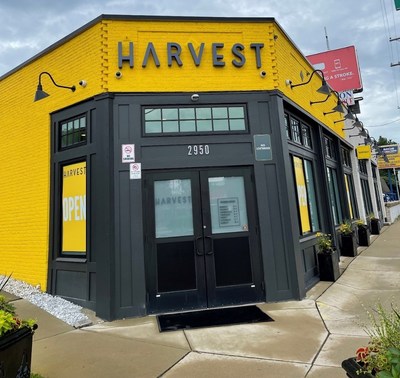

"Dry weather in parts of Ohio plus uneven crop development due to the protracted wet, cold conditions in May and June, have resulted in smaller than normal ears," said Thomison. When growers do decide to harvest, they may need to take into consideration specific harvest recommendations for corn that has experienced unevenness or shorter overall plant and ear heights due to the weather. As the temperature drops, so does the moisture loss." We'll see drying rates decrease toward the end of September, and by mid-November we could only have a quarter point of moisture loss a day. "Right now, we are probably losing one half to three-quarters of a point of moisture a day, which is very good for drying. "Growers naturally will want to take advantage of the recent weather conditions," said Thomison. Recent warm weather has created ideal conditions for drying corn. "If moisture levels drop too low, you're losing grain, and if moisture levels are too high, then you cause additional injury to the crop." The recommendation is that they begin harvesting when they've got 25 or 26 percent moisture," said Thomison. "It's going to be interesting to see what growers will do.

Growers should prioritize harvesting fields by lodging potential."īetween fluctuating rainfall and temperatures and high fuel costs, it is uncertain whether growers will wait as long as possible before harvesting or will attempt to harvest their crop early. "Also, drought stress and nitrogen deficiencies have created conditions favorable for stalk rot which may cause lodging problems.

"Corn in some fields in south and southwest Ohio will probably start coming off within the next two to three weeks, while fields in the northern part of the state won't be ready for harvest for much longer than that," he said. Thomison speculates that such variation in rainfall will have an impact on when the crop will be harvested. "Parts of the state, like the south and southwest, have received average or above average rainfall, while other parts, like the north and northeast, have received next to none."

"Right now, one issue is that there's a lot of variability by region as to crop conditions and how this might affect harvest," said Ohio State University agronomist Peter Thomison. The big question is when to begin? It seems the time to harvest is just as variable as the weather that has had growers wondering how much of an impact it will have on their crop. The season will start soon.COLUMBUS, Ohio - From too much rain to not enough, to threatening diseases, uneven fields and early season cold injury, the performance of Ohio's corn crop has remained an uncertainty for growers all season.īut one thing that is certain now is that it's harvest time. We hope all of this sounds great to you and if you share in our values and reasons for growing good food, we would love to have you as a member of our community. Connect to the land and what it produces for us, connect to the farmers and their knowledge, connect to other like minded individuals in the community to share ideas and most important - connect to great tasting food! Joining a CSA is a wonderful way to connect. Instead of 50 cents (or more) of your food dollar going to distributors and transportation, 100 percent of your food dollar goes straight to the farmer. In return members receive a share of the harvest throughout that season. Members buy their shares in advance, which helps cover the farmer’s anticipated costs of the seeds, soil amendments, land rent, labor, etc. The farmer and the consumers provide mutual support and share in the risks and rewards of a growing season. What exactly is "community supported agriculture", you ask? A CSA is a community of members who purchase a share in a farm operation. So many gatherings, cultures and history is centered around great food and all those stories begin with farmers and the community that supports them. We are always looking at ways to partner with other local farmers, producers, and makers in order to support them, also members of the community, and to enhance our member experience. “It Takes A Village” pertains to so many things in life. By following organic practices we grow vegetables, herbs, flowers and fruit for you.our community! We believe food should taste great, be grown by people who love what they do, and be enjoyed by members of the community. We are a community supported agriculture farm located in Solon, Ia.


 0 kommentar(er)
0 kommentar(er)
